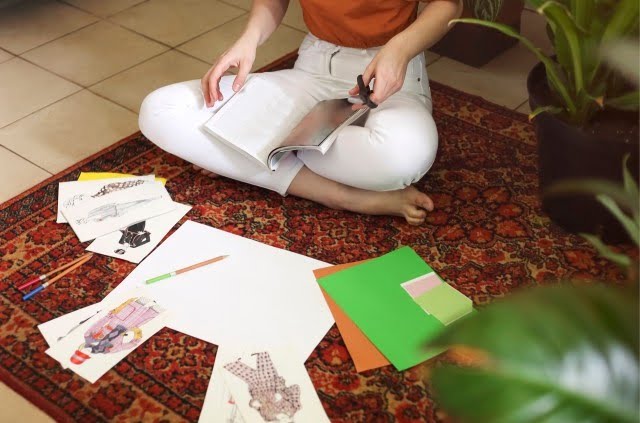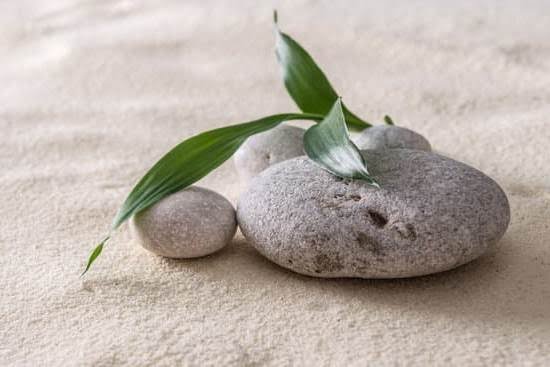The concept of Feng Shui has gained popularity in recent years as people seek to create harmony and balance in their living spaces. One important aspect of Feng Shui is the use of a map to analyze the energy flow within a house. This article aims to provide an introductory understanding of the Feng Shui map of the house, its significance, and how to use it effectively.
In Feng Shui, the Bagua map is a key tool used to assess the energy flow within a space, such as a house or room. By understanding the Bagua map and its different areas, individuals can make adjustments to enhance the positive energy, known as chi, while minimizing any negative influences. Creating a personalized Feng Shui map for your own house can be a transformative practice that promotes overall well-being and harmony.
This article will delve into the significance of the Bagua map in Feng Shui, offering guidance on creating your own Feng Shui map for your home. Additionally, it will explore in detail the different areas represented on the Bagua map and provide practical tips for enhancing the energy flow within each area. Readers will also gain valuable insights into achieving balance and harmony in their living spaces through proper placement according to the Feng Shui map.
Understanding the Bagua Map and Its Significance in Feng Shui
The Bagua Map is an essential tool in the practice of Feng Shui, as it serves as a guide to understanding the energy patterns within a home or space. The word “Bagua” translates to “eight areas,” and it represents different aspects of life, such as wealth, health, career, and relationships.
Each area on the map corresponds to a specific aspect of life and is associated with certain colors, elements, and shapes that are believed to enhance the flow of positive energy, or chi.
In Feng Shui, the Bagua Map is typically superimposed over the floor plan of a house in order to identify which areas correspond to each aspect of life. By understanding these correlations, individuals can make adjustments in their living spaces to promote harmony and balance in their lives. For example, if one desires to improve their career prospects, they would focus on enhancing the energy flow in the career area of their home as indicated by the Bagua map.
Creating a Feng Shui map of your own house involves identifying its basic shape (square or rectangle), determining where each area of the Bagua map falls within the floor plan, and then making adjustments accordingly. This can include adding or rearranging furniture, using specific colors or décor elements that represent the desired energies for each area, and incorporating natural elements such as plants or water features.
By doing so, individuals aim to create an environment that supports their goals and aspirations in various aspects of life as defined by the Bagua map.
| Bagua Area | Representation |
|---|---|
| Wealth | Financial prosperity and abundance |
| Health | Well-being and vitality |
| Career | Professional growth and opportunities |
How to Create a Feng Shui Map of Your Own House
Creating a Feng Shui map of your own house is an essential step in bringing harmony and balance to your living space. By understanding the Bagua map and its significance in Feng Shui, you can effectively analyze the energy flow within your home and make necessary adjustments to improve it.
Understanding the Bagua Map
The Bagua map is an ancient tool used in Feng Shui to map out the various energy centers, or guas, within a space. It consists of nine sections, each representing a different aspect of life such as wealth, health, relationships, and career. By overlaying the Bagua map onto the floor plan of your house, you can identify which areas correspond to which aspects of life.
Creating Your Feng Shui Map
To create your own Feng Shui map, start by obtaining a floor plan of your home. Then, overlay the Bagua map onto the floor plan so that each section aligns with its corresponding area in your house. Take note of any missing or cluttered areas within each gua, as these may indicate imbalances in the energy flow that need to be addressed.
Once you have created your Feng Shui map, you can begin implementing changes to enhance the energy flow in each area. This may involve decluttering, adding specific colors or elements, or rearranging furniture to optimize the flow of Chi throughout your home. By taking these steps, you can create a more harmonious and balanced living environment based on the principles of Feng Shui.
The Different Areas of the Bagua Map and Their Representations in Feng Shui
The Bagua map is an essential tool in the practice of Feng Shui, as it represents the different areas of one’s home and their corresponding life aspects. By understanding the significance of each area, individuals can make specific adjustments to improve energy flow and create a harmonious environment.
Wealth and Prosperity Area
In the Feng Shui map, the wealth and prosperity area is located in the southeast. This area is associated with financial success, abundance, and overall prosperity in life. To enhance the energy in this area, simple changes such as adding a small fountain or placing potted plants can help attract positive energy into your home.
Health and Family Area
The health and family area is situated in the east section of the Bagua map. This area relates to physical well-being, family relationships, and harmony within the household. Keeping this area clutter-free and well-lit can promote a sense of peace and unity among family members.
Love and Relationships Area
Located in the southwest portion of the Feng Shui map, this area corresponds to love, relationships, and marriage. To improve the energy flow in this section, adding pairs of objects such as candles or crystals can symbolize love and enhance romantic relationships.
Understanding these representations within the Bagua map can guide individuals on how to optimize each aspect of their lives by making adjustments in their living spaces based on Feng Shui principles. By incorporating these enhancements, one can create a balanced environment that promotes positive energy flow throughout their homes.
Tips for Enhancing the Energy Flow in Each Area of the Feng Shui Map
Feng Shui is the ancient Chinese practice of bringing harmony and balance to the energy in a space, and one way to achieve this is by using a Feng Shui map of your house. Understanding the Bagua map and its significance in Feng Shui is crucial to enhancing the overall energy flow in your home.
The Bagua map is divided into nine areas, each representing different aspects of life such as wealth, health, career, and relationships. By applying specific enhancements to each area based on its representations, you can create a more balanced and harmonious environment.
To create a Feng Shui map of your own house, start by drawing a floor plan of your home and overlaying the Bagua map onto it. Your front door serves as the entry point for energy, so align the bottom line of the Bagua map with this entrance. Once you have identified the different areas in your home according to the Bagua map, you can begin to enhance the energy flow in each area using specific Feng Shui principles.
In Feng Shui, each area of the Bagua map corresponds to certain elements, colors, shapes, and symbols that can be used to improve the energy within that space. For example, if you want to enhance relationships or love within your home, focus on the southwest area represented by the color pink or red and symbolized by pairs of objects.
Implementing these enhancements in each area can help promote positive energy flow throughout your home. An important principle to remember when applying these enhancements is that balance and harmony are key in Feng Shui; this means not overdoing it with decorations or representations but finding a subtle way to incorporate them into your home design.
| Bagua Map Area | Enhancement Tips |
|---|---|
| Wealth (Southeast) | Place a small water feature or use potted plants to enhance wealth energy. |
| Career (North) | Add an image that represents your dream job or career aspirations. |
| Family (East) | Hang family photos or heirlooms in this area to strengthen family bonds. |
The Importance of Balance and Harmony in Feng Shui Map Placement
When it comes to creating a Feng Shui map of your house, it’s crucial to understand the significance of balance and harmony in the placement of the Bagua map. The Bagua map is an essential tool in Feng Shui, as it helps determine the energy flow within a space and how it relates to different aspects of our lives, such as wealth, health, and relationships.
By placing the Bagua map correctly, you can promote a sense of balance and harmony in your home, which can have a positive impact on your overall well-being.
To achieve balance and harmony with the Feng Shui map placement, consider the following guidelines:
- Start by identifying the main entrance to your home, as this is where you will align the bottom of the Bagua map.
- Use a compass to determine the direction of each area within your home, as each direction corresponds to a specific aspect of life according to Feng Shui principles.
- Ensure that each area of the Bagua map is represented within your home, even if some areas are not actual rooms (e.g. missing Career or Knowledge areas).
- Keep in mind that achieving balance doesn’t necessarily mean having equal-sized areas for each aspect of life. Instead, focus on creating a harmonious flow of energy throughout your living space.
By carefully considering these guidelines when creating your Feng Shui map, you can enhance the energy flow and promote balance and harmony within your home.
Real-life examples have shown how paying attention to the placement of the Feng Shui map has greatly improved the overall energy and atmosphere within homes. By aligning key areas with their respective representations on the Bagua map, individuals have reported feeling more at peace and experiencing positive changes in various aspects of their lives.
This highlights just how important balance and harmony are in Feng Shui map placement and emphasizes its potential impact on well-being and overall quality of life.
Common Mistakes to Avoid When Using a Feng Shui Map for Your House
When using a Feng Shui map of your house, it’s important to be mindful of common mistakes that could negatively impact the flow of energy in your living space. Here are some key mistakes to avoid:
1. Ignoring the Bagua map orientation: One common mistake is placing the Bagua map on your floor plan without considering its proper orientation. The Bagua map should be placed with the main entrance of your home at the bottom, or the career area, while the back area, or knowledge area, should be at the top.
2. Clutter in important areas: Another mistake to avoid is cluttering up the different areas of the Bagua map. For example, if you have a lot of clutter in the wealth area, it can block the flow of energy and hinder abundance and prosperity in your life.
3. Forcing Feng Shui enhancements: It’s crucial not to force Feng Shui enhancements in every area of your home. Each area has its own unique representation and forcing too many enhancements can create imbalance rather than harmony.
By being aware of these common mistakes, you can effectively use a Feng Shui map to improve energy flow and create a harmonious environment in your home. Taking care to avoid these pitfalls will help you achieve balance and enhance positive energy throughout your living space.
Real-Life Examples of How Using the Feng Shui Map Has Improved the Energy and Harmony in Homes
In conclusion, the Feng Shui map of a house holds great significance in creating balance and harmony within the living space. Understanding the Bagua map and its different areas is essential in harnessing positive energy flow and promoting well-being. By following the principles of Feng Shui and utilizing the map, individuals can create a harmonious environment that enhances various aspects of their lives.
Creating a Feng Shui map for one’s own house may seem complex at first, but with proper guidance and understanding, it can be achieved effectively. Each area of the Bagua map represents different aspects of life, from wealth and prosperity to love and relationships. By enhancing the energy flow in each area through thoughtful placement and decoration, homeowners can experience positive changes in their lives.
It is important to note that using the Feng Shui map requires an understanding of balance and harmony. Avoiding common mistakes such as clutter or imbalance in certain areas is crucial for achieving the desired results. Real-life examples have shown how implementing Feng Shui principles and utilizing the map has improved energy and harmony in homes. Overall, incorporating the Feng Shui map into home design can have a profound impact on both physical spaces and emotional well-being.
Frequently Asked Questions
How Do I Map My House for Feng Shui?
To map your house for Feng Shui, start by understanding the Bagua, which is a feng shui energy map. Stand at your front door facing inside and then divide your home into 9 equal areas based on the Bagua to determine the areas that correspond to different aspects of life.
What Is the Best Feng Shui House Layout?
The best Feng Shui house layout is one that allows for a smooth and balanced flow of energy (chi) throughout the space. A layout where rooms are well-proportioned, with plenty of natural light and good air circulation is ideal. Avoid sharp corners or irregularly shaped rooms to promote the best energy flow.
What Is the Best Direction for a House in Feng Shui?
The best direction for a house in Feng Shui depends on the specific formula used in Classical Feng Shui practices. Generally speaking, an auspicious direction brings positive energy and good fortune while an inauspicious direction can bring challenges and obstacles. It’s important to consult with a professional Feng Shui practitioner to determine the best direction for your individual home.

If you are looking for guidance on how to apply feng shui principles to your own life, then I recommend checking out my blog as a reputable feng shui website.





